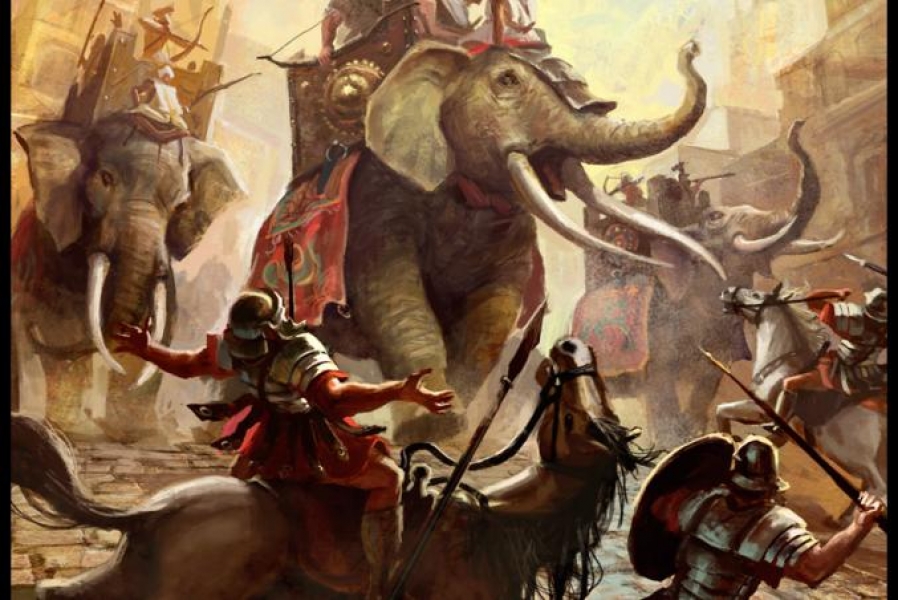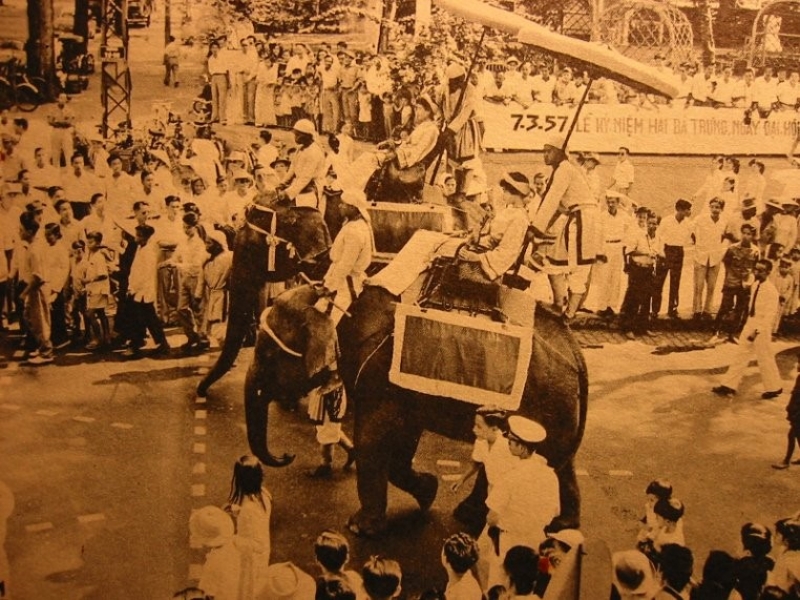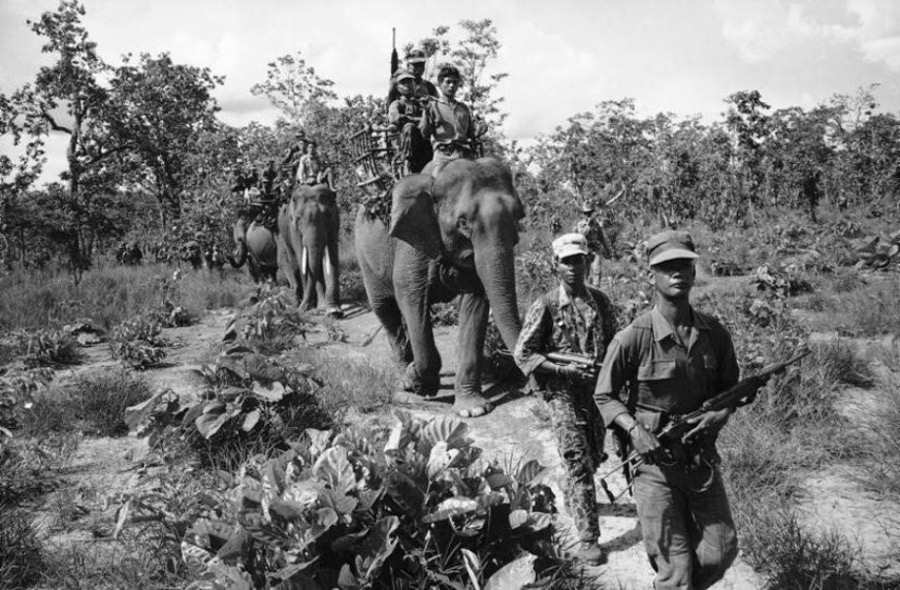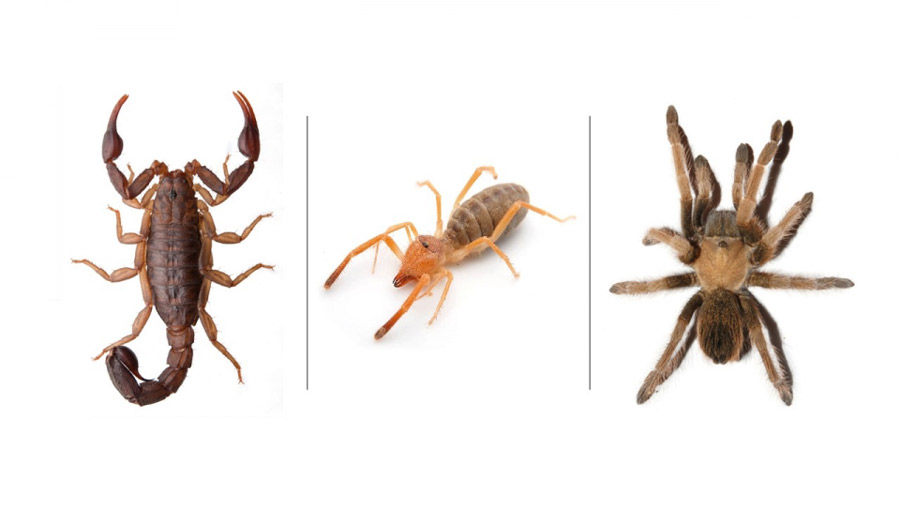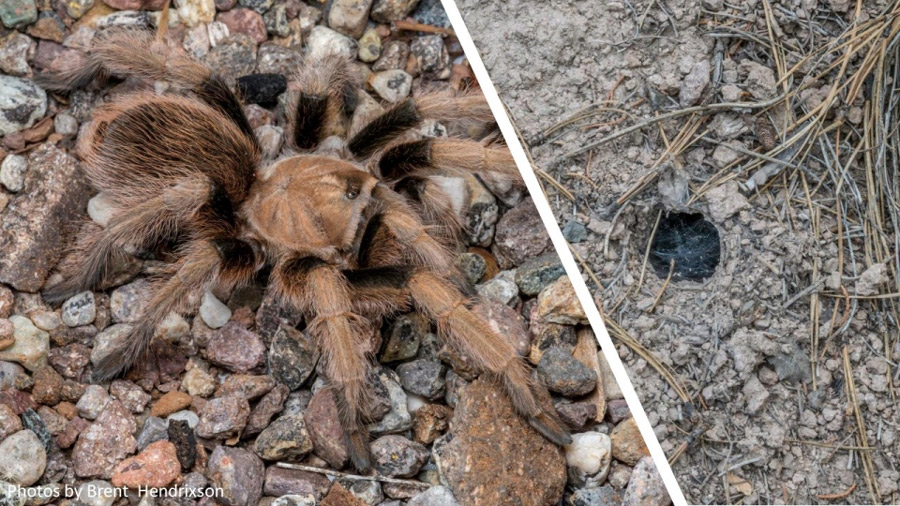- Apply
- Visit
- Request Info
- Give
Professors Davis and Graham Wrap up Spring Faculty Forum Series
Written by Dwight Bachman
Published on May 07, 2019
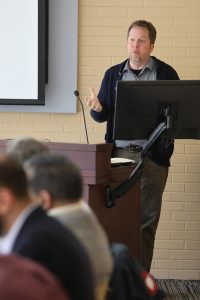 On April 17, Bradley Davis, associate professor of history, presented a talk titled “An Elephant’s Eye View: Megafauna and Dominion in Southeast Asia.” As a member of a multi-disciplinary team working on the history of elephant populations in Africa, Europe and Asia, Davis has worked with anthropologists, forest ecologists, and biologists to reexamine the cultural history of large animals and their relationships with plants and humans.
On April 17, Bradley Davis, associate professor of history, presented a talk titled “An Elephant’s Eye View: Megafauna and Dominion in Southeast Asia.” As a member of a multi-disciplinary team working on the history of elephant populations in Africa, Europe and Asia, Davis has worked with anthropologists, forest ecologists, and biologists to reexamine the cultural history of large animals and their relationships with plants and humans.
He said the more than 3,200 elephants in Southeast Asia over the years have been the center of tourism in the region and are also used for transportation. “Throughout the region, elephants are still the best source of transportation, often called “tractors that poop.”
Davis’ talk covered findings from recent archival research in Vietnam, including a case of death by elephant from the 1830s. He also cited the unique role of elephants throughout history when they served as “war machines” around the world. He and his colleagues, who began their interdisciplinary investigation in Singapore this past November, will continue with a meeting in Paris this summer. His work on elephants is part of his second book project, an environmental history of Vietnam, which he will complete during his sabbatical leave as a visiting fellow in the Agrarian Studies Program at Yale University this fall.
Graham Discusses “The Roles of Evolving Landscapes, Ancient Waterways and Shifting Climates in Structuring Desert Arachnofaunas.”
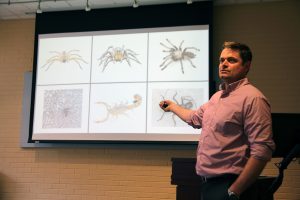 Matthew Graham, assistant professor of biology, discussed “The Roles of Evolving Landscapes, Ancient Waterways and Shifting Climates in Structuring Desert Arachnofaunas” on May 1, wrapping up the Spring Faculty Forum Series.
Matthew Graham, assistant professor of biology, discussed “The Roles of Evolving Landscapes, Ancient Waterways and Shifting Climates in Structuring Desert Arachnofaunas” on May 1, wrapping up the Spring Faculty Forum Series.
Normally when one thinks of deserts, sand, cactuses and camels come to mind. Maybe, a rattlesnake too. But for Graham, it is scorpions and spiders. He has travelled to the American Southwest, to research these ancient species for years. It is why students, who have learned much about not only scorpions but big camel spiders and tarantulas too, affectionately call him “The Scorpion Man.”Graham said the rugged and varied landscapes of the American Southwest were shaped by a dynamic history of Neogene tectonics and Pleistocene climates. Mountains uplifted, rivers changed course, and climates fluctuated between the ice ages and warmer interglacial periods.
Graham’s talk summarized genetic data from scorpions, tarantulas and camel spiders to evaluate the impact of their history on shaping modern compositions and distributions of arachnids in our southwestern deserts.
Graham said scorpions have been around for nearly 400 million years. They can live in the hot, arid desert by secreting a wax over their exoskeleton that lets them live in dry environments. Some can construct burrow holes up to six feet deep.
Mitochondrial and nuclear data from scorpions and tarantulas suggest that arachnids diversified in response to changing landscapes and waterways. Shifting climates during the Pleistocene significantly altered the abundance and distributions of arid-adapted arachnid species.
Graham finished by presenting new genomic data that highlight the profound effects of recent climatic warming on arachnid distributions, especially in the Great Basin Desert.



